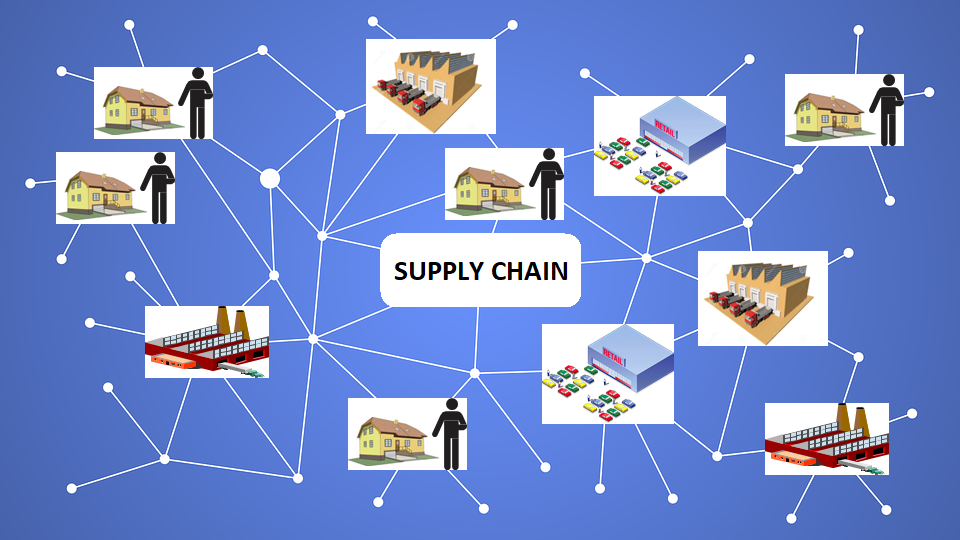The three critical components that help a retailer transition to omni-channel are Customer – building a deep understanding of customer behavior, Technology – leveraging the right technology solutions and Supply chain – setting up an optimized end to end supply chain. We discussed this in my earlier blog: https://kayspost.com/2018/08/27/omni-channel-retailing-the-journey-of-a-thousand-miles/
Let’s explore the topic of supply chain in some depth today. As a retailer, there are many facets to the supply chain:
a. Sourcing: The key question is where to source the products from? Does it make sense to source these domestically or is it better to source these from locations which have the lowest manufacturing costs or landed costs? Also, is it better to buy products that are manufactured to a retailers’ specification or is it better to invest in own manufacturing facilities to achieve the right balance of cost, quality and agility.
b. Planning: In the long term, the key question is what is the right mix of logistics units across the entire supply chain. Is there an opportunity to buy capacities or is it better to set up warehousing capacities from scratch? What is the optimal mix of make versus buy? In the short term, the key question could be what is the forecast and how best to plan supplies and replenish customer meetings points in order to meet the demand.
c. Distribution: The key question is how best to link supply with demand and thus deliver great customer experience at optimal costs. How should the transport capacities be planned? What is the cost optimal last mile delivery network? How best to meet the reliability needs of the last mile which directly impacts customer experience. What is the cost optimal method to manage returns from customers?
The biggest challenge facing most retailers today is that their supply chains have evolved over time and are not always optimized for cost and customer experience. More importantly, they are either built for a physical store or online business model and never optimized for Omni-channel.
In the new normal of Omni-channel retailing, what do retailers need to do to get their supply chain right? It is clear that there is a need to relook at the supply chain and not doing so, will not only destroy the cost structure of the business but also dent customers’ experience of the retail brand.
This is where supply chain transformation kicks in; while the end result to make the transition to being an Omni-channel retailer will mean a transformation of the supply chain, often retailers might not be able to make huge investments and accept large scale changes in one go and this brings in the need to build a step by step process that will deliver the much needed transformation. Irrespective of the number of steps needed, there are a few actions that need to be thought through.
a. Step 1: Clearly define goals based on customer expectation: There is a need to clearly understand what customer expectations are; for example, if we take the variables of speed and convenience, depending on the category the retailer works in, this could be very different, ranging from a few hours for grocery to may be a few days for customized stationery. A category where a few hours to same day delivery is a need, would entail many more logistics units closer to the points of demand.
b. Step 2: Optimize the end to end supply chain: There is a need to look at the supplier location, ocean/land movements, locations of demand, lead time expectations and the cost elements of every link in the supply chain to optimize the overall cost picture and deliver the customer service level expectations. For example, just optimizing the cost equation on supplier locations to warehouse locations could lead to very high costs on the end to end supply chain link by the time the product is delivered to the end customer. It is also important to not think of the supply chain as a linear flow but more as a network with many options to fulfil the demand. At its most granular level, every order from a customer could be a optimization problem to solve for with the lowest cost and the best customer experience being the outcomes. This could also mean that existing physical stores could be leveraged for fulfilment and existing logistics units could evolve into customer meetings points. In the end, it is important to realize that when the customer visits the physical store and buys a product and takes it home, he/she is executing an activity in the end to end supply chain; where as when the customer places an order online, the retailer is executing every activity in the supply chain until the product reaches the customer. This alone has a huge implication on how we will look at the supply chain in the future.
c. Step 3: Measure performance and continuously improve: There is a need to clearly define the metrics that will help measure performance. This will also aid the change process as many retailers will need to go through many cycles of change to implement step 2 above. It is important to ensure the metrics also compare with the goals set based on customer expectations. This will give retailers the opportunity to understand the gaps in their current supply chain and build up the capabilities in an iterative fashion.
As retailers go through the supply chain transformation process, it is important to continuously assess risks that come with the changes. In addition, there is a need to deliberate on points of failure and understand the thresholds available to operate within. For example, if the demand of a specific category switched dramatically from one channel to another, what is the threshold within which the supply chain can operate and at what point will it fail leading to poor customer experience which in turn could completely change the overall demand pattern for the category.
In the end, it is customer expectation that drives supply chain design. Retailers will need to deliver an optimal cost with a supply chain design that is based on meeting customer expectations. This is critical link to build a profitable and sustainable growth based retail business.







Leave a Reply